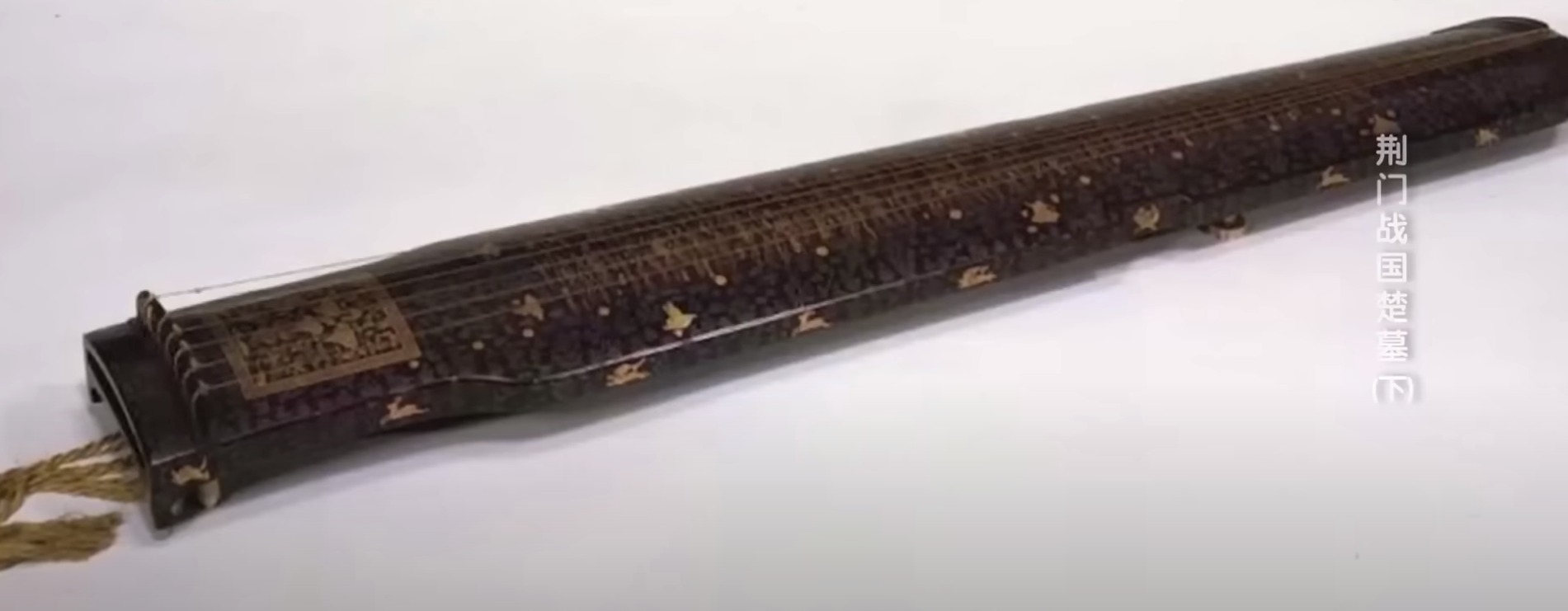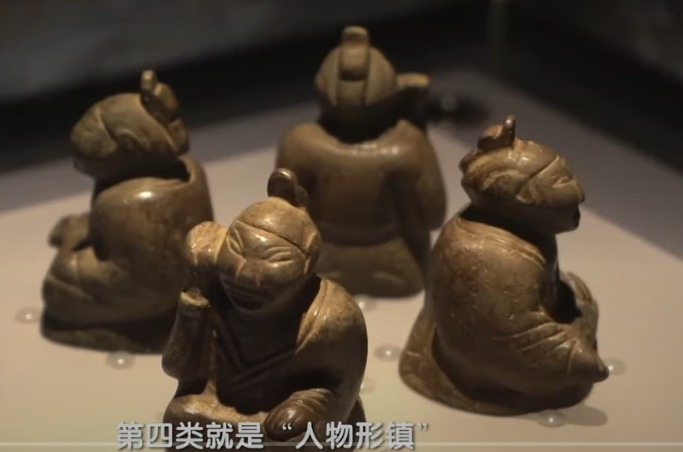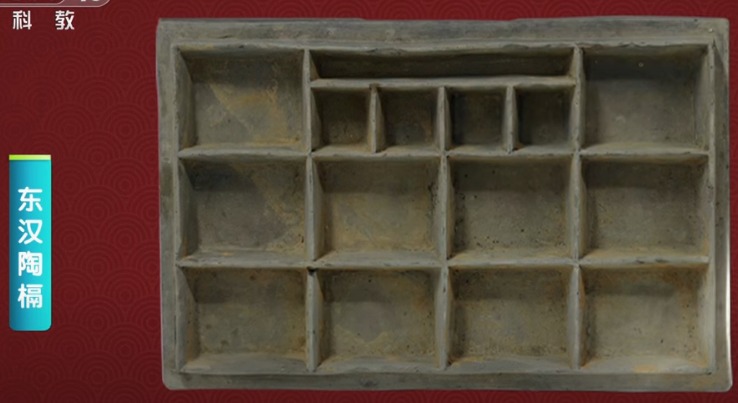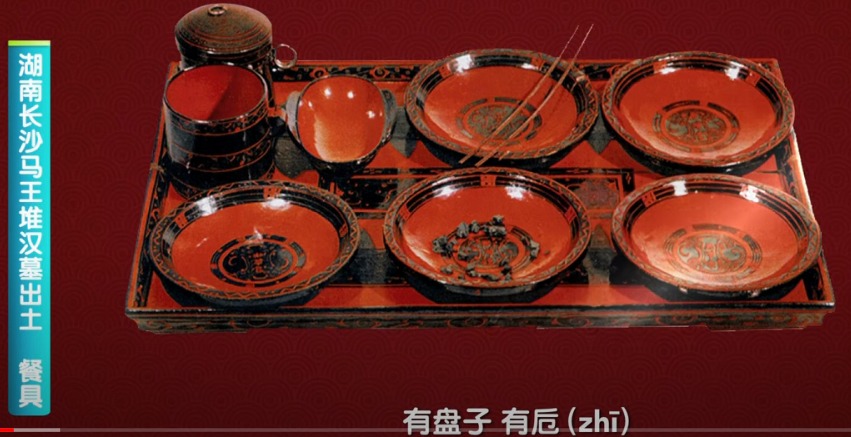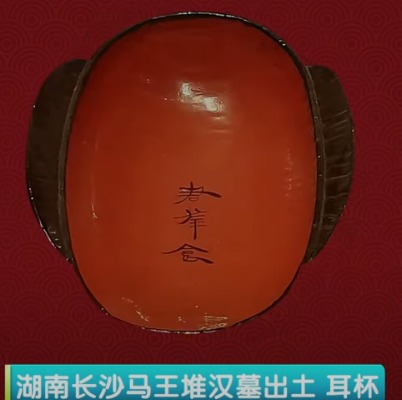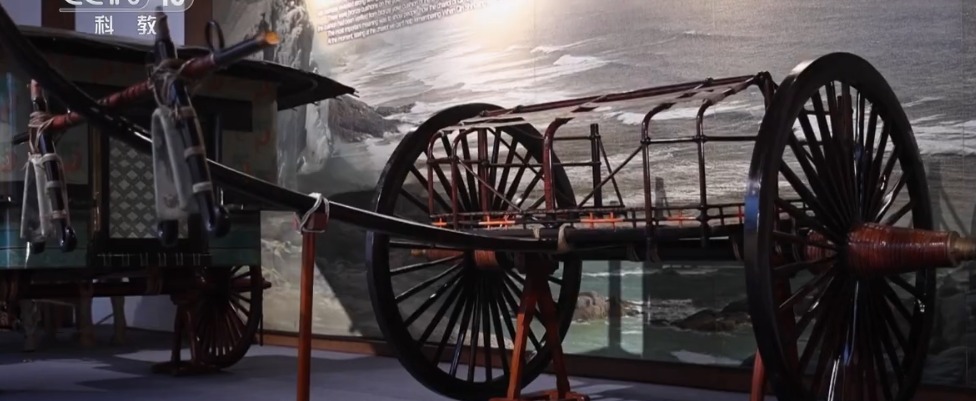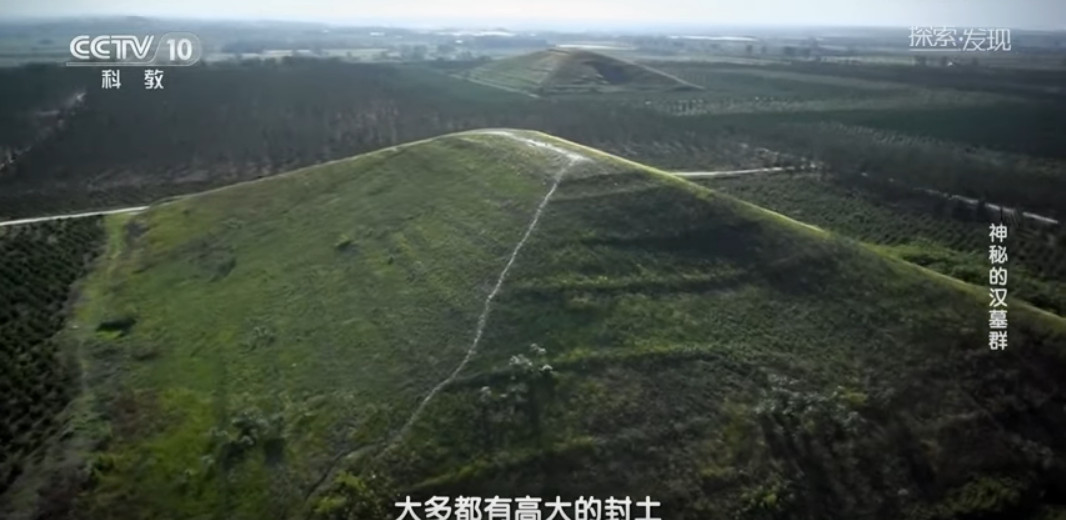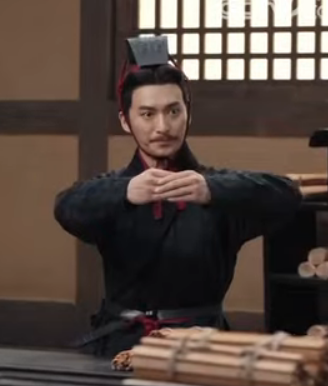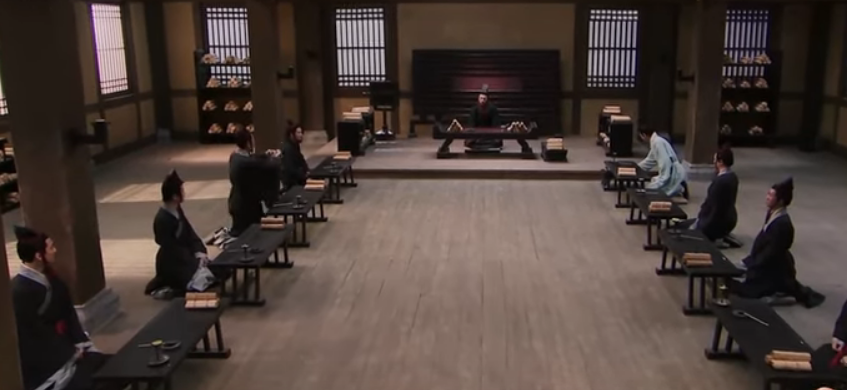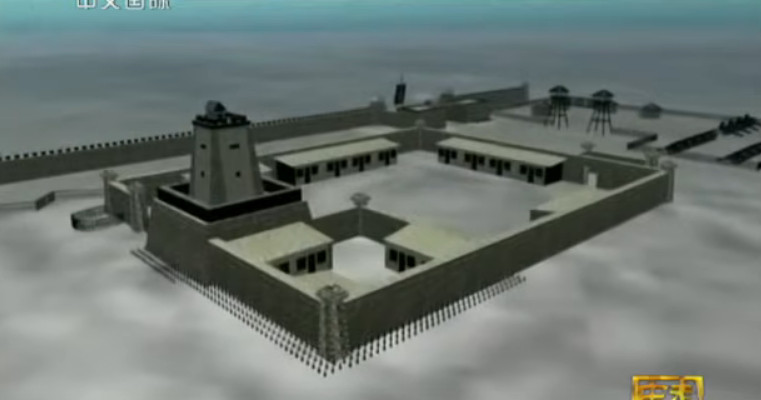Thanks for the catch! Hopefully I fixed it now, but you may have to refresh the page at that decision point.
brushmen
Creator of
Recent community posts
Yes she should be able to appear in chapter 11, but the code is so complicated I can’t give you a straightforward walkthrough. 😅 Try to keep Ning and Yao at the capital, then recruit them when you can, then they should usually be around where the Princess is. If you believe you have done those things but still ended up losing track of N, email me your save file and I’ll take a look if there could be a coding error.
But if it’s too much work don’t worry about it, it’s all optional narrative for flavor.
Also, thank you for your review comments! :)
Yang is only attracted to a woman (feminine-leaning, most likely cisgender woman), same for his sister. Male MC can be close to them, attempts to romance them, but they won’t reciprocate the same way in the romantic sense. A male MC can force a relationship with the princess, but it won’t last… The other three main ROs are open to any gender MC in the romance sense, BUT the conditions necessary for a romance to work with them are different. I think it is a slow-burn process regardless. And because of such barrier-of-entry I don’t want people to expect this Interactive-Fiction to play like a dating sim. 😅
Thank you for your interest! <3
You’re welcome to post in the forum. :)
Would you like to discuss in private? I can show you some relevant code. I think in that case it’s because your MC’s highest stat was mind. The highest mind/body will always deteriorate just because of being almost buried, if that’s reasonable (it might not, but right now that’s my logic for the “cost”)?
I don’t have a detailed design document and thus sometimes code can get out of control, and I need reader feedback to help me find bugs. 😅
As for courtesy name and birth name, I haven’t nailed down when is appropriate to switch. But it’s based on trust level and/or romance situation. But sometimes it just doesn’t “feel” right, you know. Hard to explain. (Sometimes I wonder if western-audience uses an English name, then it definitely feels more personal to them than a Chinese name that they had a limited choice of, but yeah I should try to be internally consistent… 😅)
Thanks so much for your time!
(for chapters 11-15)
Facts:
-
Walking using a crutch when missing most of both arm and leg on one side of the body (in the story it’s just missing right forearm and lower leg, but the approximate difficulty might be similar)
-
Paper existed prior to East Han dynasty’s Cai Lun. At least in Western Han dynasty. Though it’s unclear how far back it goes, and exactly how rare it really was.
-
Silver or gold spoons existed during late Warring States period. Other kinds of material include bone, copper, bronze, wood (sometimes lacquered), jade, etc.
-
Garlic was imported from western Asia during Han Dynasty (by Zhang Qian), but smaller-bulb wild onions already existed in eastern Asia around this time period.
-
Examples of recorded pungent seasoning vegetables around that time period that were local: scallions 葱、ginger 姜、mustard 芥、chive 韭、Chinese onion 薤(xiè)
-
面食通叫饼,放在汤里的面条以前叫“汤饼”,火烤叫“烧饼”,蒸的是“炊饼”(馒头)
-
濉/睢/水文 Sui script
-
双翼箭簇,三棱箭簇
-
evidence of Moxibustion were found around that era or even earlier
-
documented legend of a 13-year-old leading others to break through a siege to call for aid; the era is later Western Jin, but there would likely be others like her in earlier war times
-
Roughly before the mid-point of Spring and Autumn period, middle to upper class of the central plains cultures also practiced some form of re-marrying a woman to another man in the same clan after his death (father’s wife to a son that wasn’t born by her, brother’s wife to a surviving brother, uncle’s wife to a nephew, etc.) in order to maintain the relation between two powerful clans. (《中国全史4:中国春秋战国习俗史》169-171)
-
西北边疆木牍用耐旱木料,松杉(pinales),白杨(poplars),水柳(water willow),红柳(branchy tamarisk)
-
icebox, or “ice container/cauldron”, 冰鉴
-
konghou had a variant around this era that looked similar to a zither, but later got categorized along with horizontal and vertical harp
-
During Warring States period, peasant class people might still mainly use hands (hence the “wash hands before meal” habit) or spoon-like(匕,勺)utensil to eat millet/rice, while chopsticks (箸,筴) are mostly reserved for picking up vegetable if they use them at all. (《中国全史4:中国春秋战国习俗史》)
-
燂(tan2)潘, wash face or hair with millet/rice-rising water (《中国全史4:中国春秋战国习俗史》, 212) (making use of its alkaline content?)
Anachronism:
-
The earliest mention of “barbarian bed/couch” (folding stool) seems to be about a late Han dynasty emperor taking a liking to such a foreign object, and “stool/chair” only became better documented from Wei-Jin dynasty onward.
-
Three Ministers “Minister of War,” “Minister of the Masses,” and “Minister of Works,” or the Nine Ministers were titles used during later Eastern Han dynasty. But according to 九卿, these titles were mentioned in pre-Qin documentation, just not used during the Qin dynasty (?). So I don’t know.
-
罪己诏; earliest documented Edict of Repentance happened in later Han dynasty, but phrasing related to taking on full responsibility may have been used earlier, such as by first king of the Shang dynasty.
-
A kind of portable flame-stick/fire-starter (or a small bamboo container for tinder) was first recorded to have been invented by a palace attendant in Northern Qi dynasty (~577 AD), much later than Warring States period.
-
The time period of the Civil War of Wa may be closer to Han dynasty than Warring States period in China.
-
甜瓜 muskmelon (?) existed during Han dynasty
-
Han dynasty funeral ware of cicada-barbecue meant both barbecue and insect-eating existed at the time
-
陶槅 pottery grid-tray currently only has (earliest) archaeological evidence from East Han dynasty.
-
浮箭铜漏 Water Clock currently dates back to Western Han dynasty period
-
铁鞭 iron/hard whip’s earliest record might be during Five Dynasties and Ten Kingdoms period, much later.
Fiction (some plausible hand-waving):
-
I don’t have definitive reference of how an actual “barbarian bed” would look like, and I need to tweak it enough to fit the narrative.
-
I’m not sure what ancient “crutch” would look like (maybe not as symmetrical), but I’m hoping it would be similar enough to the underarm type to fulfill its purpose. I could consider a shape similar to the weapon “guai” (or known on wikipedia as tonfa), but having the middle hand-grip is not enough when the user might not have a hand on that side to grip it.
-
Administrator of Land is not an officially documented title.
-
Testing for blood type without today’s technology may or may not be possible at that era, but I didn’t want to make blood transfusion just coincidentally work with one try. (I would put the shaman’s trained leeches under total BS)
-
I don’t have lived experience with feeling the flow of Qi during meditation. I recently began to practice the basic Baduanjin, but not very professionally, so the result might not be apparent for a long time. I have seen other people describing how the flow of Qi feels, so I’m going to borrow some inspiration from anecdotes (difficult to tell manipulative fabrication from genuine/sincere reports). Just know that it is merely fiction in this story.
-
Cooking with heated cobblestones is feasible, but the situation in the story is not tested in real life, and might not yield much edible portion in the end.
Fiction (total BS):
- being in the spirit world (and then either remembering the experience or not); spirit-energy-powered rejuvenation
- The shaman’s rituals and his trained leeches. Even though they are based on bits and pieces of plausible ideas, because there are too many of them mashed together, I think it would be more responsible to designate the result as BS.
- Time between several events may feel short compared to how realistically they need to be in order for reinforcements to arrive from a certain distance, or for how fast wounds heal, etc. Unfortunately that’s due to poor planning on the writer’s part.
- The fight in the rain might not have been as favorable for MC and entourage. I remember pouring rain making it difficult to see while driving on highways, but that kind of low visibility might not extend to close-quarter combat. But then again, huge downpour in recent years may or may not make that fight more imaginable.
(more to be added later)
(for chapters 6-10)
Facts:
-
大带 leather belt to hang stuff, silk sash to cover it up to show high status; poor/low-status or crude people don’t wear a sash; 带钩图解
-
女闾, 营妓, state-operated or state-sanctioned sex trade (using mostly widows, female prisoners, and women who were punished just because they belonged to the same clan as criminals; although some argue minister Guan Zhong’s state-operated version gave female slaves a place to learn other skills and buy their way out of slavery, not sure how true that was, but in today’s world many people pay debts and student loans with earnings from sex work), a form of tax to fund endless warfare, maintain morale, and manage civil unrest due to pent up sexual frustration
-
Both men and women can be drafted for war (this is still debated in society to this day, as I grew up thinking otherwise and have to contend with inconsistent research findings). Shang Yang’s policy reform in Qin state required women to be listed as potential draftees, and they are expected to fight when they needed the numbers. Even if modern popular belief insists they are mostly only good for logistics management. They were likely kept in a separate division than men, and marched on different sides. Similar to “strong men” units, “strong women” were assigned into a unit of their own, separate from the older and injured soldiers. Mocius text also mentioned that when defending city-fortresses against invaders, both men and women must take up arms.
-
Retainers as “House Guests”
-
饧, Maltose
-
Tomb-sweeping day and cold food (due to fire being forbidden for use) festival used to be separate occasions, and not originally to commemorate loyalist Jie Zitui (not sure if that story was even real or just a powerful propaganda). The law to forbid the use of fire makes more sense to be about fire control during the dry season (司炬 as an official position). However, the effect of forcing common people of that era to eat uncooked/unheated food was very damaging to people’s health, and thus the length of “no fire period” was eventually reduced down to just three days.
-
Zhen, a kind of “paperweight” (often bronze miniature sculptures) to keep corners of a reed mat from curling up
-
Invention of early form of umbrella was credited to Lu Ban and his wife around that time period.
-
Medicine related: Datura 曼陀罗花, Five-Minerals Powder 五石散
-
forced migration: may take some inspiration from Dian culture, history of Chu people, Yelang culture, etc.
-
事死如事生 Prior to Buddhism influence, there was a prevalent belief among the upper-class in China that an afterlife is just another phase of life. It spurred the tradition of burying the deceased in a tomb that mirrors their home, with offerings that either were or mirror what they used in real life, and in certain eras, also buried horses/slaves/servants/family-members/vassals alive to follow them to the afterlife.
-
I modified some wording of math problem(s) from “The Nine Chapters on the Mathematical Art”
Anachronism:
-
No definite depictions of Warring States period tomb-robbing tools, but these might be similar.
-
“lock-catch” technique; the fundamentals (from military training) must already exist back then, but probably not as defined as we know them now
-
戚继光(明朝): “既得艺,必试敌” Qi Jiguang (Ming dynasty): “Once you have acquired the skills, you must test them on an opponent.”
-
Wrestling. I don’t think I will be able to depict it accurately to how it was around the Warring States era, so it might “seem” more like wrestling in later era (at least women wrestling “as bare-chested as men” was infamous one time during the Song dynasty). The key take-away is that it was initially a military training activity for soldiers (end goal being improving chance of survival), and can even involve punching and kicking.
Fiction (some plausible hand-waving):
-
(based on fact that both men and women can be drafted for war) Integration of women and men in the same army division (for at least some of Zong’s military). To lean toward this choice of depiction is partly considering the neighboring influences (like many minority cultures of the time that still maintained matriarchy, or at least where women are expected to hunt/fight as much as men do, and could openly command troops) and modern sensibilities (because we are readers in the 21st century, not 481 BC). The related hand-waving part are things like Reward’s Night (total fabrication, if it exists it’s a coincidence), Since state-controlled prostitution (minister Guan Zhong) and military-sanctioned “comfort women” situation (King Goujian of Yue) of those eras were documented (and of course rape is sadly a given), I want to imagine that some allowance for military-sanctioned sexual activities between soldiers exist, provided that the unpredictable consequences may be undesirable for the soldiers themselves so that they can police themselves to some degree. Many people were and still are sexually-driven, this is one of my fictional ways of reconciling some of the discomfort with the reality that not everyone can or wants to tame their sex drive. It’s all natural and beautiful until somebody gets hurt.
-
洛越 “lowat” people, inspired by legends of southern Yue tribes; I saw some wiki entry saying 雒越 is actually more farming-oriented, while West Yue (as a categorization) people engaged in more warfare (due to being attacked by Qin), but the possible older pronunciation Wut, Wat, or Wet is not good to use directly as an English name; Xiwat? West-Wat sounds awkward.
-
Imperial edicts, at least for Qin state/dynasty, were carved into stone tablets or bronze objects (like a measuring cup) at that time period; I need a faster/cheaper (Heng Emperor is poor) and more portable method by using silk (a material less common among the general population) banner as the canvas; who knows, maybe later the Emperor will commission a craftsman to carve it into a stone tablet. Important tidbit to learn: “奉天承运皇帝,诏曰” opening line was invented by the first emperor of the Ming dynasty, and never used before his time.
-
“Wasting-thirst” 消渴病 is a real documented illness (likely diabetes), but how I depict it in the story might be inaccurate for the sake of effect. Do not consider the doctor’s advice (quite vague anyway) applicable to modern day version of the illness.
-
息肌丸, xiji pill (“breathing” pill?! or “muscle-ceasing” pill?), a kind of aphrodisiac that has adverse effect on the womb if used over the long-term, has some historical documentation, but the complete recipe of the concoction has been lost. Current views of its confirmed component 麝香 (Moschus) only agree that it should be used with caution for a pregnant patient, but otherwise it’s unclear how toxic it is by itself when used in moderation.
-
Military formations (battle arrays) might not be completely accurate to what they were originally, since not every formation mentioned in ancient military manuals had precise diagrams.
-
Use poison to treat/neutralize poison. This has some scientific basis, like chemotherapy against cancerous cells, or the way how many Traditional Chinese medicine ingredients are actually deadly at a certain dosage. It is also a common wuxia trope. In this story I’m not using scientifically proven neutralizing combination, only the spirit of this trope.
-
People/culture inspired by 粟特人 Sugda/Sogdiana people and ancient Kucha (although probably also anachronistic if directly using these cultures), I’m making up some northwestern region cultures that are supposed to be migrants from beyond the western border of the kingdom.
-
Administrator of Agriculture is not an officially documented title, but a plausible (local) government position.
-
What information I find on finger-press pressure point treatment (with or without acupuncture) is difficult to distinguish between what was available at that time period versus thousands of years of knowledge accumulation. And sometimes information online can be misleading or plain wrong, so obviously don’t imitate it in real life.
-
Earthquake; (historically there was a documented major earthquake around that era, ~780 BCE in Guanzhong region during Western Zhou dynasty 岐山地震)
-
Prior to (or aside from) Buddhism influence, Daoists and other traditional beliefs have their own interpretations of the “Three Souls and Seven Senses.” It is very confusing to me because I can’t find a definitive explanation, so I can only take what I think is mostly agreed on, and hand-wave the rest. (Since this idea has roots in cultural belief, I’m not categorizing it under “total BS”.)
-
The royal tombs and underground palace in the story are not strictly based on any existing blueprint of an Imperial mausoleum, because I need it to be much simplified for my own sanity. I’m mainly acknowledging that there would have been measures taken to defend the rich tombs from thieves, either by setting traps, creating distractions in the tombs (letting thieves think they have already stolen everything in that tomb, etc.), making the location look plain/humble from the outside, or having several fake tombs (like Cao Cao did during Three Kingdoms era).
Fiction (total BS):
-
Reward’s Night (see “plausible hand-waving” section)
-
Troop distribution is probably illogical, but it’s an approximation to simulate a crisis
-
Troop size. Some say during Warring States era the army size would have easily reached multiples of 100,000 instead of 10,000, especially since there are only three states in the story. But I can’t yet wrap my head around that size to write about. MC is already going to have a hard time dealing with multiples of 5,000, so I don’t want to stretch my own suspension of disbelief too much.
-
The illusions seen after being struck by the Lowat tribe’s hallucinogenic poison darts
-
Spirit Poison, Soul Possession
-
Associating Heavenward Spirit with zodiac animals (I just like the imagery)
(more to be added later…)
I can’t access the forum posts to give feedback, probably because it’s in draft mode. I read the instruction first, and I think it reads fine with Ariadne’s feelings being fairly non-cousin-like (first time the emphasis on “why can’t others appreciate her”, and the strong reaction with the staring scene). But I understand your concern. What I was wondering about is the strong reaction from Atalanta during the staring scene, but not being acearo means my comment can be ignored.
(if you don’t want to spoil readers with this feedback, let me know and I will delete it)
No worries. Reaching milestone often helps with feeling better about the self, I think. :)
My personal issue with audio is the volume control. If not careful they become unintended jump-scares.
Are your Twine stories in Harlowe format? I use Sugarcube 2, and in that it’s using CSS-variables, the addClass()/removeClass() to change text/background color, and put the option inside “Settings” section for user.
Vague battle is okay. But I was just confused about the logic of the train of thought right before the final action and then the fantastical element (that had one foreshadow before, but still felt kind of Wha? when it happened). Don’t worry about that unless too many people say it’s too out-of-left-field or something. I don’t trust my own logic on most days. XD
Take care.
Hi, I’m responding based on your request for feedback on reddit. I did a quick read-through. I think the writing is good. :) I’m not sure about the ending from a storyteller’s perspective, but I get that’s not the point by your final message. :) Thanks for writing it.
- Why are you interested in adding sound effects?
- If you could provide option for different text/background color that can always be beneficial for accessibility reason.
Minor things:
- “No is below to catch you”, probably missing “one” in there
- “haircut.But”, probably missing a space after the punctuation
During the initial placement phase, a coin being dragged over the square gets consumed by the square as well. I recommend having a switch that says “Ready” or “Test” so that square doesn’t start consuming the coins until it’s supposed to go. Unless that is intended effect, then never mind. :)
In level 3, the square eventually moved outside of the view window and I couldn’t dice-roll it back to anywhere close to the coins, so I gave up then.
Keep up the good work. :)
=== 服装 ===
穿在身上的中国
服章礼仪
周朝军戎服饰
秦朝军戎服饰
汉朝军戎服饰
=== 科学 ===
《典故里的科学》:伏地听声, 藤甲衣, 身轻如燕
=== 医学 ===
法医宋慈
本草中华
本草流芳 (CCTV playlist)
《点击中国》麻沸散
张仲景说这方中
《中国中医药大会》:
第一期 望闻问切, 第二期 经方, 第三期 儿科,第四期 本草, 第五期 妇科, 第六期 治未病, 第七期 骨伤, 第八期 针灸, 第九期 急救, 第十期 疫病, 第十一期 衷中参西
《中国中医药大会》第二季: 医儒同道, (上)海派医智
《如果国宝会说话》针灸铜人
=== 治国 ===
大国治道
冷兵器时代,围魏救赵
楚国八百年
风云战国之列国
春秋芮国仲(芮)姜、桓公、芮伯万、士兵墓
《东方帝王谷》第二集:周:华夏鼎新
=== 学术 ===
稷下学宫
=== 六艺 ===
《探索·发现》观德之射: 上集, 下集
=== 书籍 ===
书简阅中国
郭店楚简《老子》,《太一生水》
典籍里的中国:
《尚书》,
《天工开物》,
《论语》,
《孙子兵法》,
屈原,
徐霞客,
《道德经》,
《易》,
《汉书》,
《礼记》,
《诗经》,
《越绝书》,
(北魏)《齐民要术》 (提到西汉《氾胜之书》,东汉《四民月令》)
简牍探中华:
里耶秦简·上,
里耶秦简·下,
云梦睡虎地秦简,
张家山汉简,
天回医简,
悬泉汉简·上,
悬泉汉简·下,
银雀山汉简,
武威汉简,
居延汉简·上,
居延汉简·下, 清华简 (算表),
尹湾汉简
=== 习俗 ===
宋镇豪。《中国全史4:中国春秋战国习俗史》。刘丽华责任编辑。史仲文、胡晓林主编。北京:人民出版社。1994.4
=== 葬俗 ===
中华国宝(channel)
《国宝·发现》:
头顶铜釜脚穿铜锅?探寻神秘夜郎国的套头葬
别样的“中国靴子”!它是世界上最早发现的双马镫
青铜戟、青铜钺、青铜剑等大量青铜礼器能否揭开墓主身份之谜?随葬的兵器又为何被故意损毁?《揭秘白草坡西周墓》(下)
海曲汉墓(“神灯”、铜镜、铜印章和鸠杖)
秦陵铜车马
国家宝藏 第三季 第2期
https://www.bilibili.com/bangumi/play/ep378752 (现今可识~4378甲骨文字,;李宗焜《甲骨文字编》记录了46635甲骨文)
https://www.youtube.com/watch?v=_c2OZJSM59E
=== 国宝 ===
《如果国宝会说话》
西汉二十八星宿圆盘圭表,战国商鞅方升,象牙筹码
“君幸食”狸猫纹漆食盘,铜奔马
里耶秦简(木牍记载户口,护照),秦始皇陵铜车马
=== 文字 ===
《甲骨王朝》
=== 食艺 ===
《鲜生史》
藏北驮盐
李明明,吴慧。《中国文化史丛书:中国盐法史》。刘如仲、李泽奉主编。台北市:文津出版社。1997。20-54页。
=== 方志 ===
【马背上的青铜帝国】第二集 马上行国
《方志中国》: 第二集 源远流长
=== 器物 ===
《古物天工》: 避暑,
美洲食物(五味之辛被明朝时进口的美洲辣代替),
攻城器械
==== 讲座 ====
《中国衣裳》: 霓裳羽衣到底是什么样子的?它真的是用羽毛制作的吗?,
古人为什么把紫色尊为贵色?,
如此注重礼仪的古人为什么要穿“开裆裤”呢?
《九章算术》:
上,
下
“鲜卑族人编发左衽”
==== 片段 ====
试烧天然暴露地面的石油,石腊
笄礼
粮仓处理
古滇国究竟是怎样的一个国度?“活人祭祀”难道真实存在?
在没有钢筋水泥混凝土的先秦时代 古人如何把埋藏在地底深处的矿石珍宝一件件运到地面?
镇墓兽
”巴蜀图语“
西周男童梳总角,女童头顶留髻(“树叉”式发型),束发礼意义所在于约束头发及行为
古人生下三个月由父起名,二十岁冠礼时由嘉宾起字,字可与名相同或相反
三揖三让
古农民见织女星黄昏当空,知道七月开始
男耕女织,织女星当空时女子织布为冬衣准备
仪式型青铜剑玉剑格
汉代流行吃枣
古琴琴弦由蚕丝制成(细弦300根丝,粗弦上千根)
楚国青铜剑出鞘
羊皮筏子
汉代铜量
五岁开始喂马,六岁开始骑马
==== 现代表演 ====
舞蹈:
自得琴社《神人畅》,
杨丽萍现代舞团《火》,
何灏号《祈》,
张翰主演《入画》,
古丽米娜《五星出东方》,
Horus Mozarabe,
罗昱文,陈一如,徐超然《高山流水》,
杨峥《汉乐舞》,
古丽米娜·麦麦提 常宏基 任鑫《丝路舞韵》
歌唱:
韩雪《豳风·七月》
乐器:
蔡珊,陈曦《春风》,
筑,彭丽颖《易水歌》
武术:
峨嵋武术(凌云表演),
环首刀(含亮表演)
Wen Yang vs. Lv Bu(凌云,止戈表演),
《骏上弦》(舞蹈与蒙古骑射)
服装:
二〇二〇中國裝束復原秀(東周至清代)00:00-12:16,
《衣尚中国》黄昏迎亲(战国齐国公主嫁装)
=== 仿古影视 ===
羋月傳 第18集 秦王與楚國公主聯姻婚禮儀式
I like your writing (the language of it), the way you segment it for easy reading, and balancing variety of choice versus manageable branching so that you can aim for 2~3-week update schedule.
Would be keen to help you code the next interactive-fiction (unless you decide to switch mid-way through this one) in SugarCube so the save system might be easier to manage. XD But whatever makes things easier for you is the best.
Take care.
(for chapters 1-5)
Facts:
* Political landscape inspired by the collapse of Zhou dynasty through Warring States (even Three Kingdoms) situation, the Emperor being overpowered and overshadowed by the vassal lords
* Quotations from Master Meng, Master Zhuang, Master Mo, Master Sun's Art of War, Book of Odes (or Classic of Poetry), Master Han Fei, Inner Canon of the Yellow Emperor, Master Xun, Dao De Jing, monster imagery inspired by entries in Classic of Mountains And Seas
* Zodiac hours; an ancient Chinese hour equals two modern day hours
* LGBTQ+ existence (but definitely not enough documentation, because even celebrities had to compete for attention to be documented by historians)
* examples of natural (not stage voice) but "unexpected" vocal pitch: Jamyang Dolma, Zhou Xun (actress), Zhou Shen or Charles Zhou (here he sings in an even higher pitch, here he changes his pitch higher and lower)
* traditional bowing etiquette
* proto-celadon ware
* Around that time period, at least well-to-do people might have been using "spoon" for eating rice/millet, while using "chopsticks" for cooking or to pick out vegetable/meat from either the still-hot cooking vessel or the plate (like a pair of shared-chopsticks when sharing a meal with other people). I can't be certain how "well-made" poor people's eating utensils were, or if they didn't consider the lacking of eating utensil an issue.
* 十二章纹
* Music-related: Yue Folk's Song 越人歌 (modern version: female vocal, falsetto, male vocal), seven-string zither 古琴 (started from five-string pre-Zhou, then added one and two more by Zhou dynasty; there was an excavation of a ten-string zither for Warring States period), Yu pipe 竽 (36 pipes), Chime Bells; Chime Stones, Warm Spring, White Snow
* Arts-related: ritual dancing in military context
* game of Encirclement 围棋/弈, or Weiqi/Go/Baduk, but was played on 17x17 board, not the modern day 19x19; the ancient Chinese rules vary from the modern Japanese-influenced rules: it used to be white first (or any side can be first), usually played by the stronger side, and the opening 8 moves around the corner star positions is what limits the advantage of the initiator (philosophically/symbolically it's also setting up the initial balance of power), so there was less need for the 5.5 points compensation. Based on this archaeological finding, it is plausible for Go stones to be made in Bronze, Lapis Lazuli, or even other material, as well as being not strictly black versus white in color (and they are shaped like small eggs in that video.)
* Acupuncture (but the needles of that time looked different than modern day ones)
* Medicinal ingredients: Snakesbane 蛇灭门 (Thermopsis lupinoides), Lingzhi 灵芝 (Reishi Mushroom), Dingxiang 丁香 (Intermediate Luculia), motherwort 益母草 (Leonurus japonicus), sealwort 黄精 (Polygonatum sibiricum), "wolfbane" 狼毒/断肠草 (Stellera chamaejasme)
* Weapons and Armors: Scaled Leather Tunic or lamellar armor, rattan armor 藤甲 (idea borrowed from Romance of the Three Kingdoms)
* Cultures where the population might be few and livelihood difficult to sustain, both men and women were expected and encouraged to know how to hunt and fight. Before becoming "civilized" by Confusian advocates, it is said that cultures like early Qin people (fought neighboring nomadic tribes), Zhongshan people (were nomadic themselves), Chu people (driven to the south to start over), all championed the fighting spirit for everyone in their community.
* Eyebrow-painting with charred willow branch or graphite
* hostage exchange, First Emperor of Qin was the son of someone who did go through that experience
* The significance of direction of seating, at least during Warring States period. In a square arrangement, east-facing is for one with highest status, south-facing next, north-facing after that, and west-facing last. In the Emperor's audience chamber, Emperor always sits south-facing, and favors people on his/her right side
* Earlier Eight Trigram pattern
* Inaction
* 锅盔 crusty pancake as military ration, easy to carry by individual soldiers (instead of piled up on wagons)
* Calligraphy ink cannot be wiped clean easily from basic bamboo strips (it's not like a whiteboard with specialized markers). Otherwise so much ancient text couldn't have survived till modern time. Writing on bamboo strips are usually scraped/carved off, or use orpiment (Arsenic trisulfide) like White-Out, then write on top of that layer. 战国时期砚台与墨丸
* close combat: boxing matches (战国时期“相搏”, Zuo Commentary's entry on Duke Xi, chapter 28 mentions the Duke dreamed that he was boxing another Duke), sword fight (in Zhuangzi, King of Zhao held sword-fighting matches like Rome's Gladiators)
* Cuju, kickball
* actual geological locations: Mount Tai, Yellow River, Long River
Anachronism:
* Qin Emperor's color was Black (for the Heavens/Space, or the Qin state element, Water). I'm not sure about the official color of the declining Zhou dynasty (maybe red for the Fire Element?). Not yet Yellow (a few potential reasons, such as association with the Yellow Emperor, or the association with Earth, etc.) from Sui dynasty onward (when an Emperor preferred the commoner's clothing color, but later in Tang dynasty was "legally" made into the Emperor's color). I like the imagery of black for the blackness of the universe, and also I'm thinking about the unification in the story, just like what the Qin Emperor achieved.
* fancy carriages (with fully enclosed wooden chassis) are much less common during that time period, even for the most wealthy, since carriages were likely extensions of war chariots in the beginning, and they cost money to construct for roads that might not have been paved
* Grist mill and wheat might have already existed during late Warring States period, but noodle (the long slender strands as we know today) might not have been as common. Even the short dumpling sheet version that might have existed during Tang dynasty is a much later thing.
* Ring-Pommel Blade (?) 环首刀 might be more prominent during Han dynasty
* Current archaeological finding of stir-up dates its invention after this general time period, so may fudge the exact time a bit
* The shape of the seven-string zither ("guqin") might not have stabilized at this time but at later Wei and Jin dynasty. There was also a ten-string zither from archaeological finding. They might have all been developed from a five-string zither.
* Candle was still very expensive to make around that era, so should be even less common than mentioned. Lots of bean oil lamps more likely.
* Trousers in the modern sense came into common use much much later, but Qin soldiers, prisoners or laborers wore some kind of trousers for ease of movement, and northern horse-ridding cultures had trousers that were later adopted by Zhao state military (but maybe not extended to commoners); most people just had long tunics to cover as much as possible even in a sitting pose, lower leg sock-like shoes (for aristocrats), or simpler crotch-wrapping cloths (like what Japanese Sumo wrestlers wear)
* 西周时有合裆裤?
* During Warring States period an Emperor probably doesn't have a throne-like seat, just that he has more fancy stuff around him when in his official seating position
* Rainbow Skirt and Feathered Robe (霓裳羽衣) dance is from the much later Tang dynasty; and I don't really know what the routine looks like; supposedly the music is based on or inspired by Music of Brahmin (婆罗门曲), from ancient Kucha (龟兹) region
* Gulls and Herons Forget Scheming, from the much later Song dynasty
* Not sure about when pressure points have standardized names, so I'll assume what I can find in pressure point diagrams are based on later era medical text. Actual pressure point names: Chize, Quze, Yitang, Qianquan
* There must have been female physicians, but currently the earliest historically-acknowledged one is 义姁 during West Han dynasty.
* From the later Song dynasty and onward, 圣旨 ("Imperial Edict") the term may include all types of official order from the Emperor.
* Paper is better documented to be "more easily mass-produced" during Han dynasty (after the Warring States period and Qin unification), because there may have been recent discovery of pieces of "proto-paper" that survived the elements (earlier Western Han dynasty also had paper, which scientists speculated their use to be more likely as wrapping material before they are more widely used for documentation). I also believe animal skin type parchment may have been possible, just rarer, and not really common among people who don't read/write.
Fiction (some plausible hand-waving):
* The Stems-and-Branches system 60-year-cycle simplified by me into an Elements-and-Zodiac system 60-year-cycle (because I didn't memorize the Stems-and-Branches terms, but I know the Elements and the Zodiac order)
* Zodiac-associated months (apparently there are associations, but the date ranges do not correspond to the dates of each modern month as cleanly as I would like in the story for simplicity)
* I'm not sure swords at that era consistently had scabbards. The swords/blades as burial offerings I saw did not have them, and generally they were not displayed in museums with an accompanied scabbard. Maybe the wooden scabbards all rotted to nothing by the time they were unearthed, since there were bronze swords that had bronze scabbards. Regardless, I want the imagery of unsheathing, so I gave them all scabbards.
* Fighting with Qi (Qi energy is not fiction, but in this story I'm too loose with its depiction, going with the Wuxia flavor)
* wuxia-inspired martial arts should look and feel more "primitive" at the time; I can't find definitive argument of whether India's Kalaripayattu is a major influence to much of later era martial arts or not, only certain that "native born" martial arts would definitely have existed and evolved (every closed community in the world would develop its own fighting style), examples were stories of the assassins during the Warring States period, Swordswoman of Yue, Master Zhuang persuading King of Zhao to abandon his obsession with watching swordsmen kill each other, etc. True martial arts were born out of the necessity to kill. Fight in a way to not get killed, not about looking cool while doing it.
* Wester Corridor is based on Hexi Corridor, the exact going-ons during that period will be glossed over or fabricated in service of the story, but it will still symbolize the spirit of the Silk Road (which more officially began during later Han dynasty). Commerce between tribes of people have always happened at local levels. So there may have been a similar "Stone Road" during the Stone Age, and a "Bronze Road" (see Ordos bronze ware) during the Bronze Age, etc. Exchanging crafted ware and crafting techniques. The region may have also been less arid than we know of today (or maybe I misread some information; documentaries have been able to provide a less desert-like scenery, however, so I don't know just how desert-like it was at that era).
* Heaven's Ritual in the story is a mashup of actual Heaven Worship (done in winter season) and modern day Spring Festival, because I don't want to write around too many distinct festivities; and the specifics that happen during the ritual are not thoroughly researched, only sprinklings of the general idea, such as ritual dancing, distribution of sacrificial meat based on status and level of contribution to society/community, etc.
Fiction (total BS):
* Ancient Chinese does not sound nor look like modern Mandarin (ignoring the fact that it then has to be localized for each specific readership), especially when it didn't go through something like the Qin dynasty standardization
* 99% of location names and character names (besides existing authors of writing that were referenced) are made up (Google-fu will fail you this time). Most of the surnames were inspired by surnames of that approximate era, but otherwise just going by what sounded reasonable. I try to avoid overlaps, because pinyin without tone marker will make many names look the same even if they sound different in Mandarin.
* Blood-letting to cure Krait-bite? The patient was super lucky.
* BS martial arts move to knock people out with strikes around the neck region. I don't really know how that works.


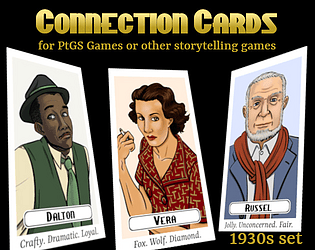
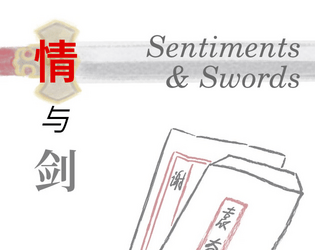
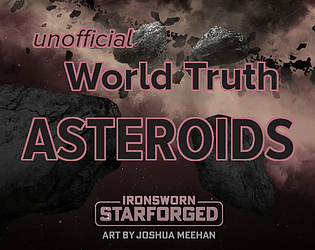
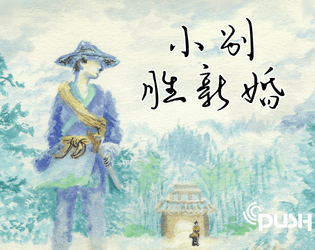


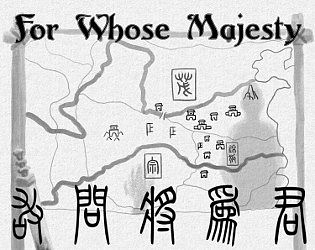
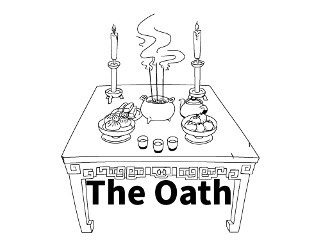
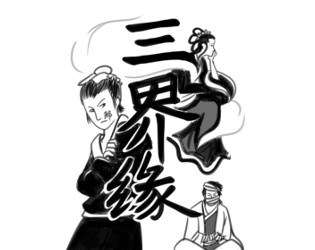
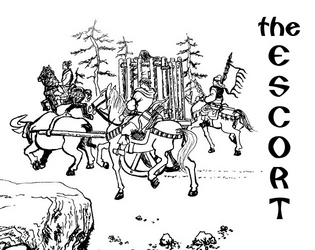
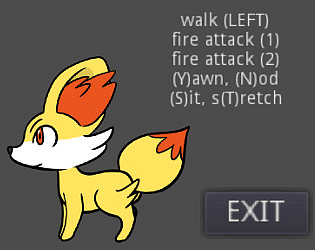


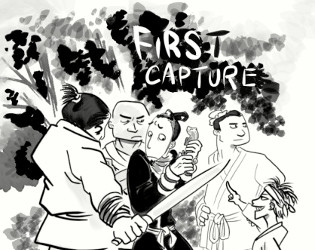


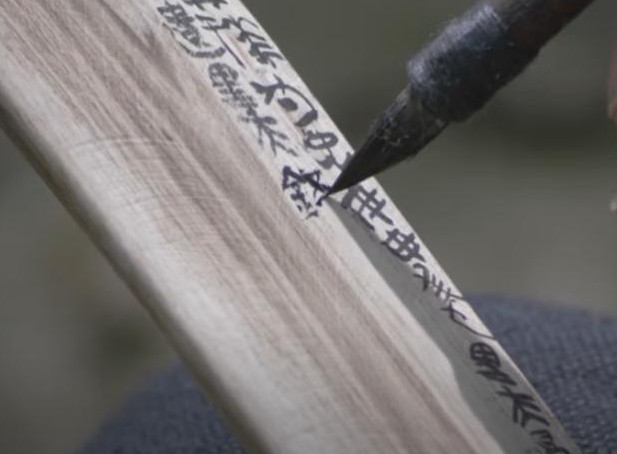
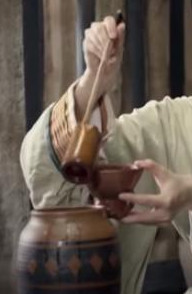

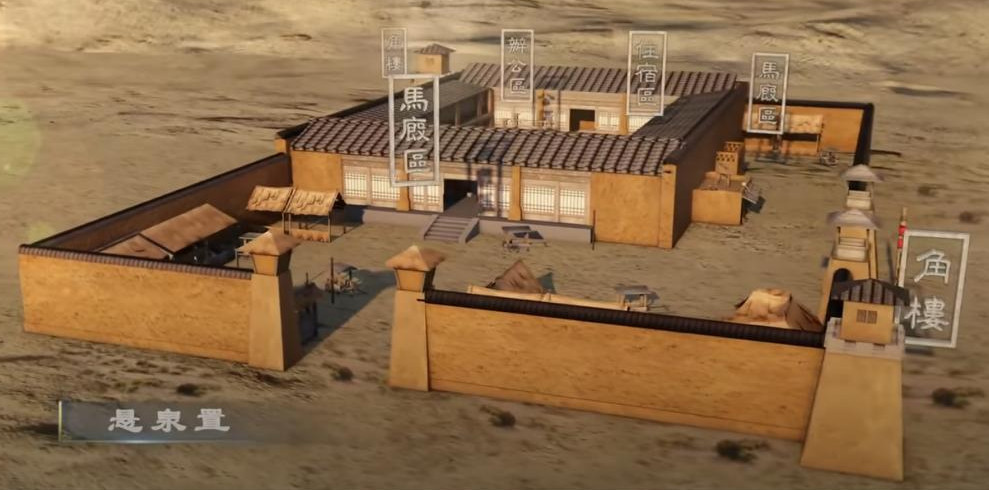
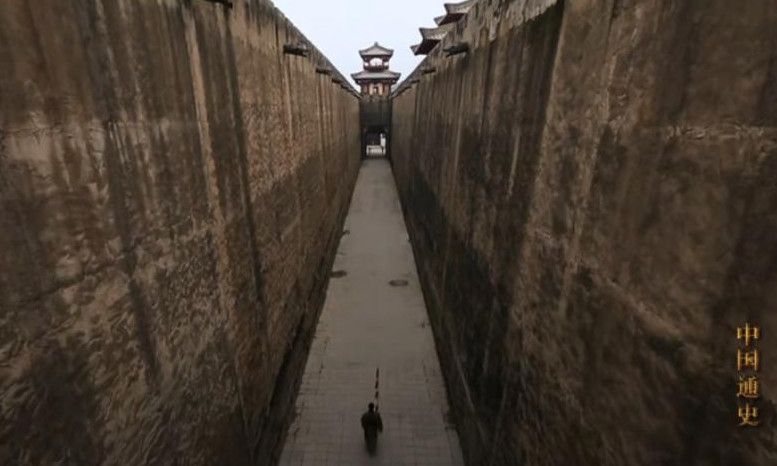 image source: “中国通史”
image source: “中国通史”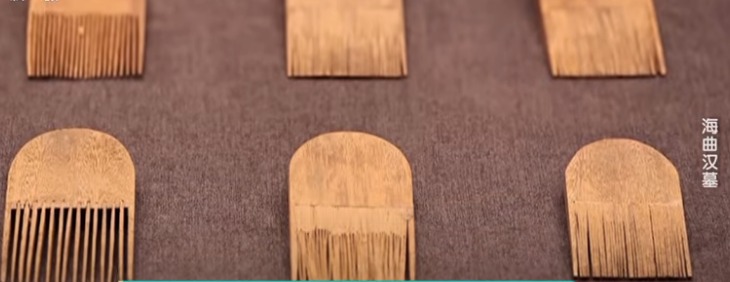
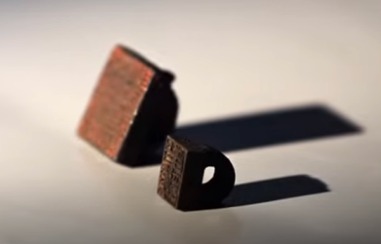 image source: “中华国宝”
image source: “中华国宝”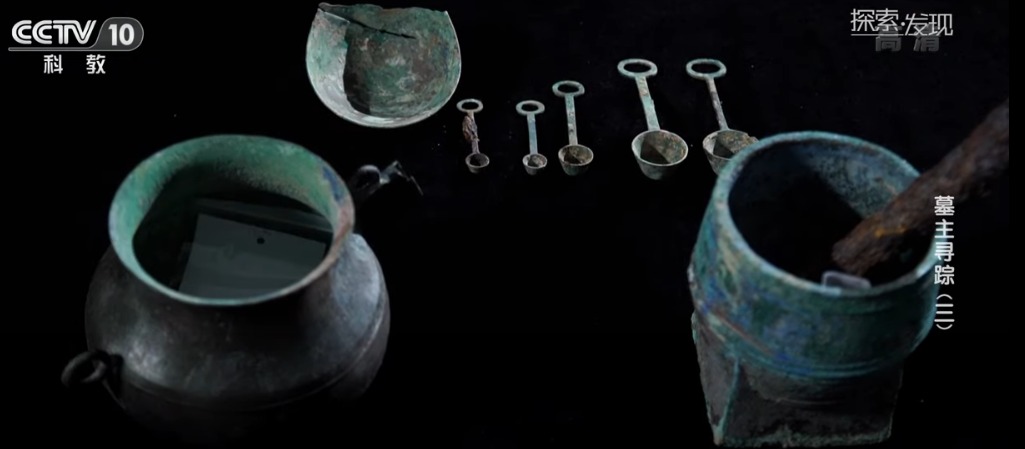 image source: “中华国宝”
image source: “中华国宝”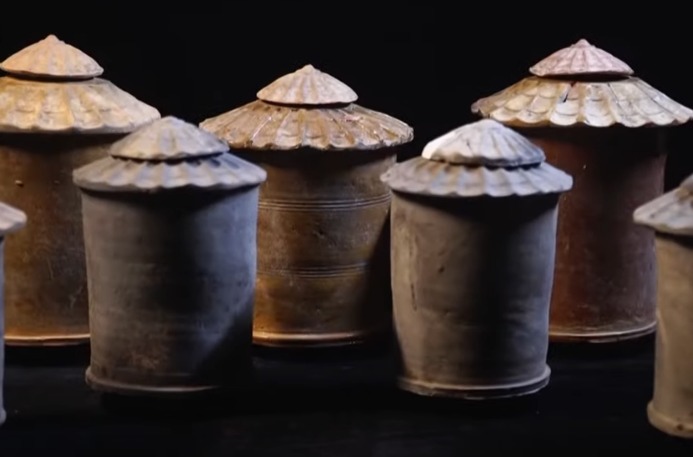 image source: “中华国宝”
image source: “中华国宝”